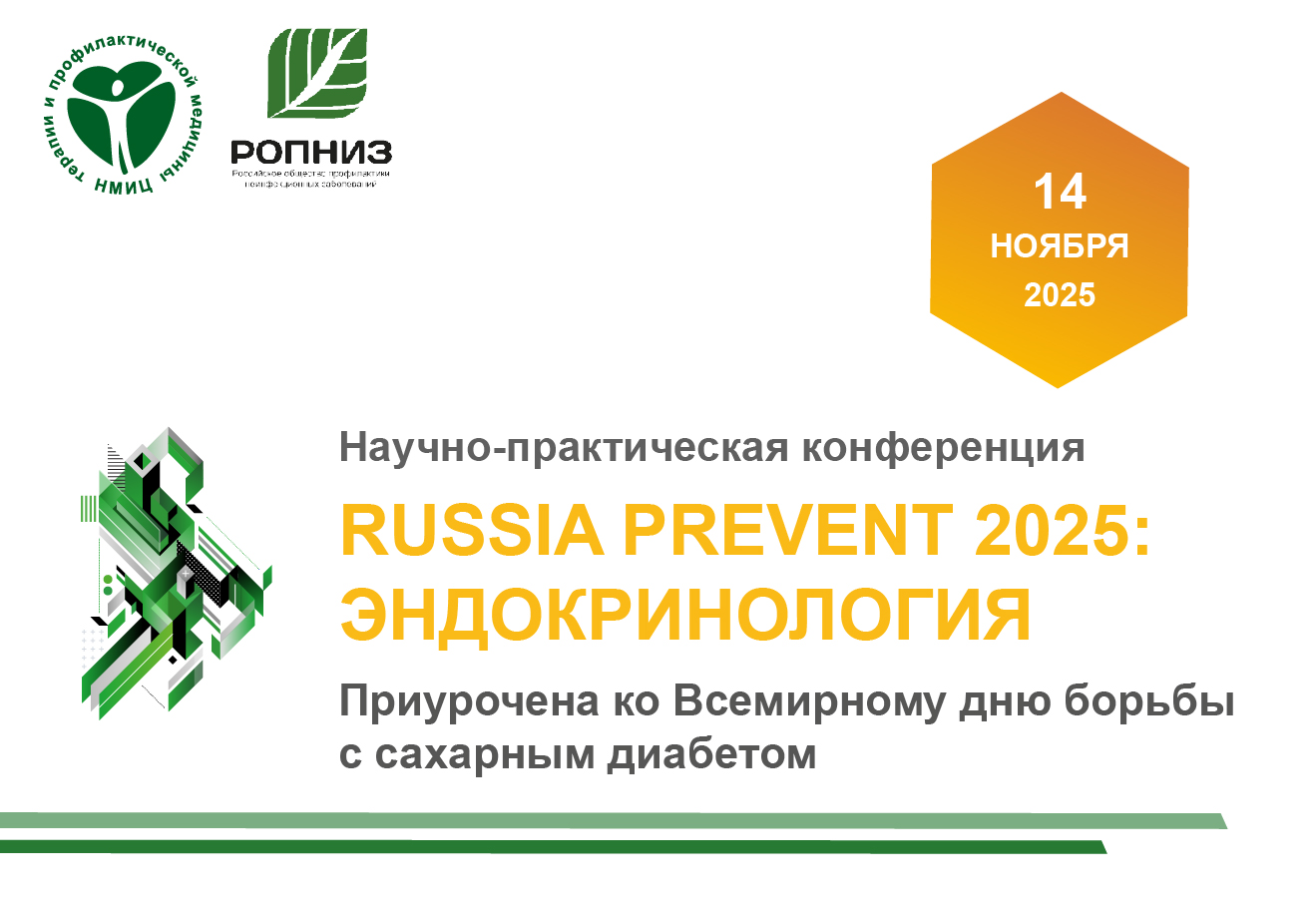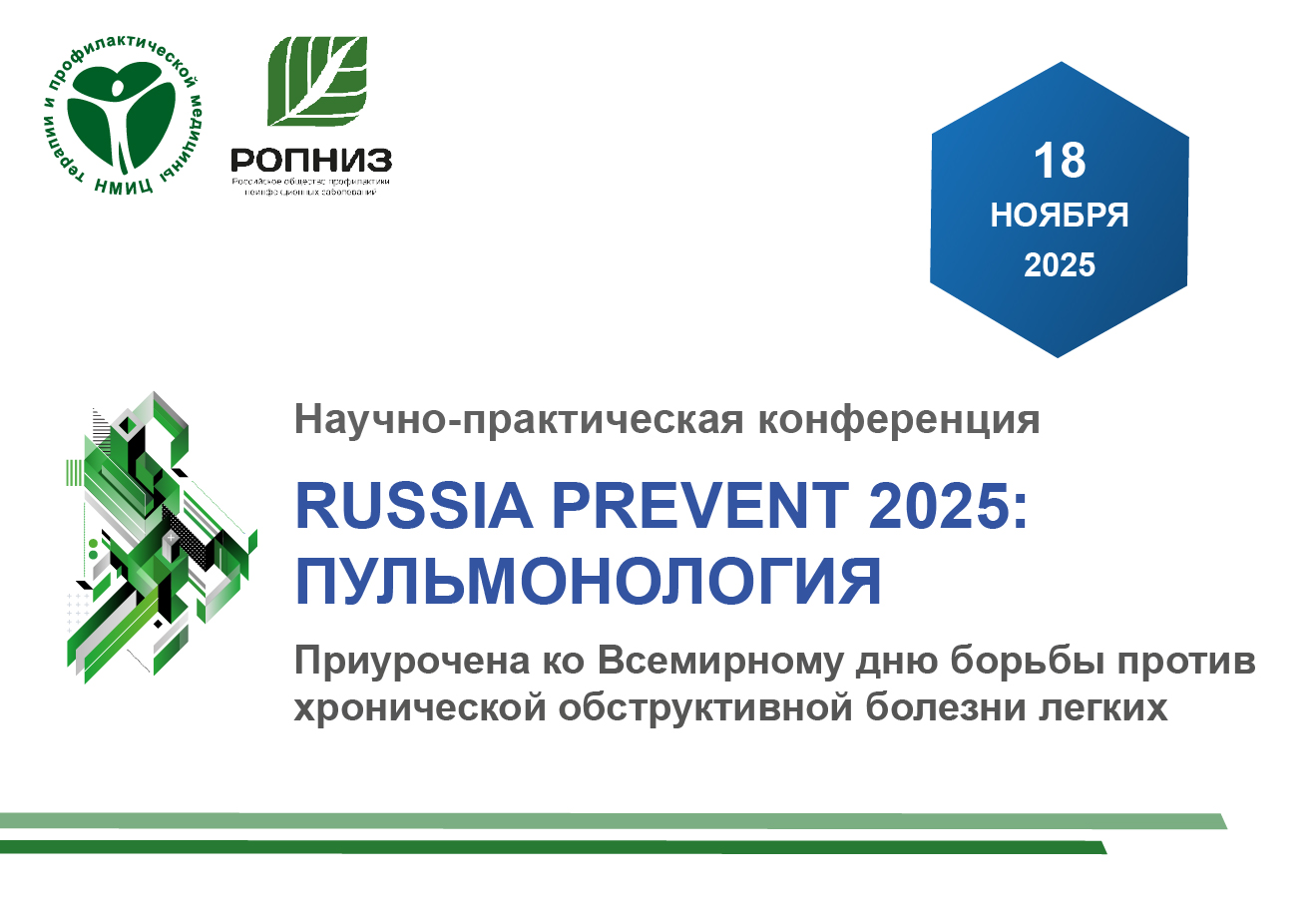Prevalence of psychological stress among the Russian population and its association with socio-demographic characteristics. Data from the ESSE-RF3 study
https://doi.org/10.15829/1728-8800-2023-3795
EDN: OAQXPT
Abstract
Aim. To assess the prevalence of psychological stress (PS) using the Perceived Stress Scale-10 (PSS-10) in various Russian regions and to analyze PS associations with socio-demographic characteristics and behavioral risk factors and some non-communicable diseases (NCDs).
Material and methods. We studied representative samples of the population aged 35-74 years in the Russian regions, examined as part of the Epidemiology of Cardiovascular Diseases in Regions of Russian Federation-3 (ESSE-RF3) study. The subjects were interviewed using a questionnaire containing a section on the psychological stress — PSS-10. For men, PS levels are ranked as follows: "Low" — 0-11, "Medium" — 12-17, "High" — 18-40. For women, PS levels are ranked as follows: "Low" — 0-13, "Medium" — 14-19, "High" — 20-40. Statistical analysis was carried out using the open-source R 3.6.1 environment.
Results. The average PS level was 12,0±7,3 (men: 10,7±7,0; women: 13,1±7,4). Every fifth person (20,3%) in the Russian population has a high PS level, with higher PS rates among women compared to men (high PS level — 21,6 vs 18,9%, respectively). A high PS level was associated with the income level (average or low), no marriage, unemployment, low level of physical activity, depression, anxiety, NCDs (type 2 diabetes, myocardial infarction, stroke), additionally for women — hypertension.
Conclusion. The Russian population is characterized by a high PS prevalence, while PS rates are higher among women, which must be taken into account when predicting the NCD risks.
About the Authors
O. M. DrapkinaRussian Federation
Moscow
L. I. Gomanova
Russian Federation
Moscow
Yu. A. Balanova
Russian Federation
Moscow
V. A. Kutsenko
Russian Federation
Moscow
A. E. Imaeva
Russian Federation
Moscow
A. V. Kontsevaya
Russian Federation
Moscow
S. A. Maksimov
Russian Federation
Moscow
G. A. Muromtseva
Russian Federation
Moscow
M. B. Kotova
Russian Federation
Moscow
N. S. Karamnova
Russian Federation
Moscow
O. B. Shvabskaya
Russian Federation
Moscow
S. E. Evstifeeva
Russian Federation
Moscow
A. V. Kapustina
Russian Federation
Moscow
O. A. Litinskaya
Russian Federation
Moscow
M. S. Pokrovskaya
Russian Federation
Moscow
S. O. Kuzyakina
Russian Federation
Moscow
A. G. Soplenkova
Russian Federation
Moscow
Yu. V. Doludin
Russian Federation
Moscow
I. A. Efimova
Russian Federation
Moscow
A. L. Borisova
Russian Federation
Moscow
E. B. Yarovaya
Russian Federation
Moscow
T. V. Repkina
Russian Federation
Barnaul
T. O. Gonoshilova
Russian Federation
Barnaul
A. V. Kudryavtsev
Russian Federation
Arkhangelsk
N. I. Belova
Russian Federation
Arkhangelsk
L. L. Shagrov
Russian Federation
Arkhangelsk
V. A. Samotrueva
Russian Federation
Astrakhan
A. L. Yasenyavskaya
Russian Federation
Astrakhan
E. N. Chernysheva
Russian Federation
Astrakhan
S. V. Glukhovskaya
Russian Federation
Ekaterinburg
I. A. Levina
Russian Federation
Ekaterinburg
E. A. Shirshova
Russian Federation
Ekaterinburg
E. B. Dorzhieva
Russian Federation
Ulan-Ude
E. Z. Urbanova
Russian Federation
Ulan-Ude
N. Yu. Borovkova
Russian Federation
Nizhny Novgorod
V. K. Kurashin
Russian Federation
Nizhny Novgorod
A. S. Tokareva
Russian Federation
Nizhny Novgorod
Yu. I. Ragino
Russian Federation
Novosibirsk
G. I. Simonova
Russian Federation
Novosibirsk
A. D. Khudyakova
Russian Federation
Novosibirsk
V. N. Nikulin
Russian Federation
Orenburg
A. R. Aslyamov
Russian Federation
Orenburg
G. V. Khokhlova
Russian Federation
Orenburg
A. V. Solovyova
Russian Federation
Tver
A. A. Rodionov
Russian Federation
Tver
O. V. Kryachkova
Russian Federation
Tver
Yu. Yu. Shamurova
Russian Federation
Chelyabinsk
I. V. Tantsyreva
Russian Federation
Chelyabinsk
I. N. Baryshnikova
Russian Federation
Chelyabinsk
M. G. Ataev
Russian Federation
Makhachkala
M. O. Radjabov
Russian Federation
Makhachkala
M. M. Isakhanova
Russian Federation
Makhachkala
M. A. Umetov
Russian Federation
Nalchik
L. V, Elgarova
Russian Federation
Nalchik
I. A. Khakuasheva
Russian Federation
Nalchik
E. I. Yamashkina
Russian Federation
Saransk
M. V. Esina
Russian Federation
Saransk
T. A. Kunyaeva
Russian Federation
Saransk
A. M. Nikitina
Russian Federation
Yakutsk
N. V. Savvina
Russian Federation
Yakutsk
Yu. E. Spiridonova
Russian Federation
Yakutsk
E. A. Naumova
Russian Federation
Cheboksary
A. A. Keskinov
Russian Federation
Moscow
D. A. Kashtanova
Russian Federation
Moscow
V. S. Yudin
Russian Federation
Moscow
S. M. Yudin
Russian Federation
Moscow
S. A. Shalnova
Russian Federation
Moscow
References
1. Drapkina OM, Kontsevaya AV, Kalinina AM, et al. 2022 Prevention of chronic non-communicable diseases in Of the Russian Federation. National guidelines. Cardiovascular Therapy and Prevention. 2022;21(4):3235. (In Russ.) doi:10.15829/1728-8800-2022-3235.
2. Kotova MB, Rozanov VB, Aleksandrov AA, et al. Association of psychosocial stress with the social environment, lifestyle and risk factors for cardiovascular diseases in middle-aged male Muscovites. Russian Journal of Cardiology. 2021;26(5):4335. (In Russ.) doi:10.15829/1560-4071-2021-4335.
3. Gafarov VV, Gromova EA, Gagulin IV, et al. Effects of stress on risk of arterial hypertension in general male population of 25-64 years old: 14 years of follow up (epidemiological study on the basis of the WHO program «MONICA – PSYCHOSOCIAL»). Arterial Hypertension. 2013;19(1):27-31. (In Russ.) doi:10.18705/1607-419X-2013-19-1-27-31.
4. Gafarov VV, Panov DO, Gromova EA, et al. Workplace stress and its impact on the 16-year risk of myocardial infarction and stroke in an open female population aged 25-64 years in Russia/Siberia (WHO MONICA-psychosocial program). Terapevticheskii Arkhiv. 2015;87(3):71-6. (In Russ.) doi:10.17116/terarkh201587371-76.
5. Gafarova AV, Gagulin IV, Gromova EA, et al. Smoking, work and family stress in an open population aged 45-69 years in Siberia, Russia. International heart and cardiovascular journal. 2021;9(29):11-9. (In Russ.) doi:10.24412/2311-1623-2021-29-11-19.
6. Harris ML, Oldmeadow C, Hure A, et al. Stress increases the risk of type 2 diabetes onset in women: A 12-year longitudinal study using causal modelling. PLoS One. 2017;12(2):e0172126. doi:10.1371/journal.pone.0172126.
7. Tenk J, Mátrai P, Hegyi P, et al. Perceived stress correlates with visceral obesity and lipid parameters of the metabolic syndrome: A systematic review and meta-analysis. Psychoneuroendocrinology. 2018;95:63-73. doi:10.1016/j.psyneuen.2018.05.014.
8. Yang T, Qiao Y, Xiang S, et al. Work stress and the risk of cancer: A meta-analysis of observational studies. Int J Cancer. 2019;144(10):2390-400. doi:10.1002/ijc.31955.
9. Drapkina OM, Shishkova VM, Kotova MB. Psychoemotional risk factors for non-communicable diseases in outpatient practice. Guidelines for internists. Cardiovascular Therapy and Prevention. 2022;21(10):3438. (In Russ.) doi:10.15829/1728-8800-2022-3438.
10. Shapovalova EB, Maksimov SA, Indukaeva EV, et al. Association of stress with cardiovascular diseases and risk factors in a population (ESSE-RF in Kemerovo region). Russian Journal of Cardiology. 2019;(9):7-13. (In Russ.) doi:10.15829/1560-4071-2019-9-7-13.
11. Cohen S, Kamarck T, Mermelstein R. A global measure of perceived stress. J Health Soc Behav. 1983;24(4):385-96.
12. Klein EM, Brähler E, Dreier M, et al. The German version of the Perceived Stress Scale – psychometric characteristics in a representative German community sample. BMC Psychiatry. 2016;16:159. doi:10.1186/s12888-016-0875-9.
13. Algren MH, Ekholm O, Nielsen L, et al. Associations between perceived stress, socioeconomic status, and health-risk behaviour in deprived neighbourhoods in Denmark: a cross-sectional study. BMC Public Health. 2018;18(1):250. doi:10.1186/s12889-018-5170-x.
14. Gamonal-Limcaoco S, Montero-Mateos E, Lozano-López MT, et al. Perceived stress in different countries at the beginning of the coronavirus pandemic. Int J Psychiatry Med. 2022;57(4):309-22. doi:10.1177/00912174211033710.
15. Ababkov VA, Barisnikov K, Vorontzova-Wenger OV, et al. Validation of the Russian version of the questionnaire “Scale of perceived stress-10”. Vestnik of Saint-Petersburg University. Series 16. Psychology. Education. 2016;(2):6-15. (In Russ.) doi:10.21638/11701/spbu16.2016.202.
16. Scientific Organizing Committee of the ESSE-RF. Epidemiology of cardiovascular diseases in different regions of Russia (ESSE-RF). The rationale for and design of the study. Profilakticheskaya Meditsina. 2013;16(6):25-34. (In Russ.)
17. Drapkina OM, Shalnova SA, Imaeva AE, et al. Epidemiology of Cardiovascular Diseases in Regions of Russian Federation. Third survey (ESSE-RF-3). Rationale and study design. Cardiovascular Therapy and Prevention. 2022;21(5):3246. (In Russ.) doi:10.15829/1728-8800-2022-3246.
18. Costa C, Briguglio G, Mondello S, et al. Perceived Stress in a Gender Perspective: A Survey in a Population of Unemployed Subjects of Southern Italy. Front Public Health. 2021;9:640454. doi:10.3389/fpubh.2021.640454.
19. Robillard R, Saad M, Edwards J, et al. Social, financial and psychological stress during an emerging pandemic: observations from a population survey in the acute phase of COVID-19. BMJ Open. 2020;10(12):e043805. doi:10.1136/bmjopen-2020-043805.
20. Carstensen LL. Socioemotional Selectivity Theory: The Role of Perceived Endings in Human Motivation. Gerontologist. 2021;61(8):1188-96. doi:10.1093/geront/gnab116.
21. Golovey LA, Murtazina IR, Strizhitskaya OYu, et al. Differences in Perception of Daily Stressors among Residents of Arkhangelsk and Saint-Petersburg. Ekologiya cheloveka (Human Ecology). 2018;(12):32-8. (In Russ.)
22. Banu N, Sultana H, Hossa M. Perceived Mental Stress Among Employed And Unemployed Women: A Comparative Cross Sectional Study During COVID-19 Pandemic. J Prev Soc Med. 2021;40(2):52-7. doi:10.3329/jopsom.v40i2.61797.
23. Stubbs B, Veronese N, Vancampfort D, et al. Perceived stress and smoking across 41 countries: A global perspective across Europe, Africa, Asia and the Americas. Sci Rep. 2017;7(1):7597. doi:10.1038/s41598-017-07579-w.
24. Skov-Ettrup LS, Nordestgaard BG, Petersen CB, et al. Does High Tobacco Consumption Cause Psychological Distress? A Mendelian Randomization Study. Nicotine Tob Res. 2017;19(1):32-8. doi:10.1093/ntr/ntw186.
25. Maksimov SA, Danilchenko YV, Tabakaev MV, et al. The relation of alcohol consumption with cardiovascular diseases and risk factors (ESSE-RF trial in Kemerovskaya oblast). Russian Journal of Cardiology. 2017;(9):65-70. (In Russ.) doi:10.15829/1560-4071-2017-9-65-70.
26. Cao B, Zhao Y, Ren Z, et al. Are Physical Activities Associated With Perceived Stress? The Evidence From the China Health and Nutrition Survey. Front Public Health. 2021;9:697484. doi:10.3389/fpubh.2021.697484.
27. Maksimov SA, Kotova MB, Gomanova LI, et al. Mental Health of the Russian Federation Population versus Regional Living Conditions and Individual Income. Int J Environ Res Public Health. 2023;20(11):5973. doi:10.3390/ijerph20115973.
28. Vancampfort D, Koyanagi A, Ward PB, et al. Perceived Stress and Its Relationship With Chronic Medical Conditions and Multimorbidity Among 229,293 Community-Dwelling Adults in 44 Low- and Middle-Income Countries. Am J Epidemiol. 2017;186(8):979-89. doi:10.1093/aje/kwx159.
Supplementary files
What is already known about the subject?
- Psychological stress (PS) is a significant risk factor for non-communicable diseases.
- There are not enough papers demonstrating the epidemiological features of PS on the scale of the Russian Federation.
What might this study add?
- Every fifth (20,3%) in the Russian population has high PS level, while among women PS rates are higher compared to men (PS level — 13,1±7,4 vs 10,7±7,0; high PS level — 21,6 vs 18,9%).
- Significant associations were identified between high PS levels and socio-demographic characteristics, behavioral risk factors, anxiety, depression, and non-communicable diseases (myocardial infarction, stroke, type 2 diabetes). Additionally, a history of hypertension is significant for women.
Review
For citations:
Drapkina O.M., Gomanova L.I., Balanova Yu.A., Kutsenko V.A., Imaeva A.E., Kontsevaya A.V., Maksimov S.A., Muromtseva G.A., Kotova M.B., Karamnova N.S., Shvabskaya O.B., Evstifeeva S.E., Kapustina A.V., Litinskaya O.A., Pokrovskaya M.S., Kuzyakina S.O., Soplenkova A.G., Doludin Yu.V., Efimova I.A., Borisova A.L., Yarovaya E.B., Repkina T.V., Gonoshilova T.O., Kudryavtsev A.V., Belova N.I., Shagrov L.L., Samotrueva V.A., Yasenyavskaya A.L., Chernysheva E.N., Glukhovskaya S.V., Levina I.A., Shirshova E.A., Dorzhieva E.B., Urbanova E.Z., Borovkova N.Yu., Kurashin V.K., Tokareva A.S., Ragino Yu.I., Simonova G.I., Khudyakova A.D., Nikulin V.N., Aslyamov A.R., Khokhlova G.V., Solovyova A.V., Rodionov A.A., Kryachkova O.V., Shamurova Yu.Yu., Tantsyreva I.V., Baryshnikova I.N., Ataev M.G., Radjabov M.O., Isakhanova M.M., Umetov M.A., Elgarova L.V., Khakuasheva I.A., Yamashkina E.I., Esina M.V., Kunyaeva T.A., Nikitina A.M., Savvina N.V., Spiridonova Yu.E., Naumova E.A., Keskinov A.A., Kashtanova D.A., Yudin V.S., Yudin S.M., Shalnova S.A. Prevalence of psychological stress among the Russian population and its association with socio-demographic characteristics. Data from the ESSE-RF3 study. Cardiovascular Therapy and Prevention. 2023;22(8S):3795. (In Russ.) https://doi.org/10.15829/1728-8800-2023-3795. EDN: OAQXPT

























































